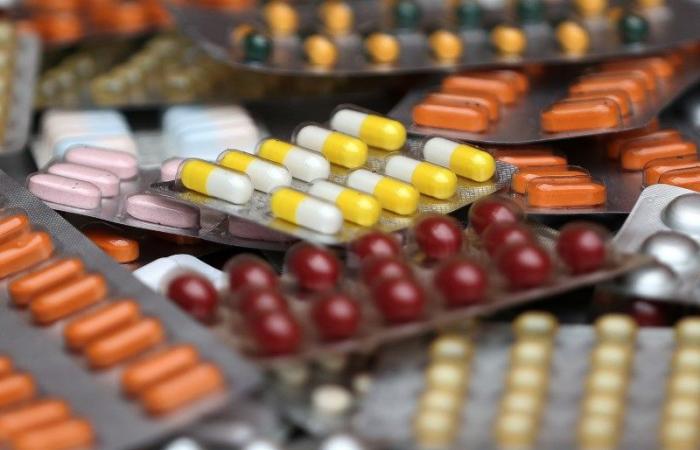
Estadão Contenti Estadão Content https://istoedinheiro.com.br/autor/estadao-conteudo/
02/04/2024 – 11:00
An analysis carried out by the Consumer Protection Institute (Idec) points out that the adjustment in the price of medicines that came into force this Monday, the 1st, in the country may, in practice, be much higher than the 4.5% rate defined by Medicines Market Regulation Chamber (CMED), federal body responsible for regulating and monitoring medicine prices in Brazil. This is because the percentage increase is applicable to the Maximum Consumer Price (PMC), that is, the maximum amount that pharmacies can charge customers for each medicine.
Pharmacies, however, rarely reach this value. The Idec study shows that, in practice, drugstores tend to charge a much lower value than the PMC for products and, therefore, always have room for increases outside the established annual adjustment index – which is generally linked to the period’s inflation. .
Given the scenario, even with the limitation of an adjustment ceiling, this index cannot prevent abusive increases if drugstores want to raise prices up to the PMC limit. According to an Idec survey in which the prices of 20 medicines were analyzed in the three largest pharmacy chains in the country, the value of a branded medicine can increase by more than 70% without violating the ceiling. In the case of generics, this increase can exceed 100%.
According to the institute, the numbers show that the prices of medicines defined by the government body are disconnected from market practices, which leaves consumers vulnerable to abusive practices.
“The research has several interesting results, but the main one is the finding, once again, that medicine price regulation fails to protect consumers in practice. On average, the maximum prices allowed by regulation are very disconnected from the market reality, and this leaves room for pharmacies to adopt a series of abusive practices”, stated Marina Magalhães, researcher in the Idec Health program.
Marina, who is one of those responsible for the study, cites the antibiotic Amoxicillin + Potassium Clavulanate as an example. Although the maximum price allowed for it is R$404.65, it is found, on average, in pharmacies for R$180.30. “However, the adjustment will be applied to the maximum price. Therefore, if the manufacturer and pharmacies double the price of this medicine overnight, the consumer will have nowhere to turn,” highlighted the researcher.
The results reveal that, among branded medicines, the average difference between the current prices charged in pharmacies and the maximum value stipulated by regulation was 37.82%. In absolute terms, the biggest difference found was R$224.35, related to the antibiotic Clavulin. Among generics, the average difference was 20.89%. In this case, Aciclovir, an antiviral used to treat infections caused by the herpes virus, stood out with a discrepancy of R$65.94.
Discounts with CPF
When considering the discounts granted when the customer informs their CPF, the difference between the market average and maximum prices is even greater. For branded medicines, this discrepancy almost doubles, growing from 37.82% without a discount to 71.63% with a discount.
In the case of discounted generics provided by granting personal data, the difference between market reality and the limits established by CMED more than fivefold, jumping from 20.89% to 115.52%.
“For at least eight of the twenty medicines researched, we noticed that the full price charged by pharmacies coincided with the CMED ceiling price. However, with the granting of the CPF, discounts were applied that varied, on average, from 20% to 77% of the final value of the medicine. What we can interpret from this is that pharmacies often inflate the price so that, at the time of purchase, they can coerce the consumer into sharing their personal data in exchange for artificial discounts,” said Marina.
Regulation
Idec highlights that the results highlight the need for a review in the regulation of the pharmaceutical market. “Such significant discrepancies point to a clear gap between current regulations and commercial practices, which compromises their effectiveness and harms the achievement of their objectives. The most vulnerable consumers will be the most affected, especially those with health problems who depend on essential medicines for their quality of life”, highlighted Marina.
The study also presents suggestions for improving regulation. According to Idec, it is necessary to update standards to ensure greater transparency in the costs of producing and marketing medicines, establish pricing criteria that are more aligned with national reality, grant the Medicines Market Regulation Chamber (CMED) the prerogative of adjust prices according to market dynamics, promote regulatory harmonization and involve society in the process of defining medicine prices.
All of these proposals are part of the “Medicine at a Fair Price” Campaign, which endorses the approval of Bill 5591/20. This project aims to change the rules for defining the prices of new medicines on the Brazilian market and establish new transparency requirements for companies in the sector. However, the PL, currently under the rapporteur of Senator Ciro Nogueira, is stuck in the Senate’s Constitution, Justice and Citizenship Committee, without significant progress for almost a year.
Tags: Adjustment price medicines higher approved rate Idec understand
--




